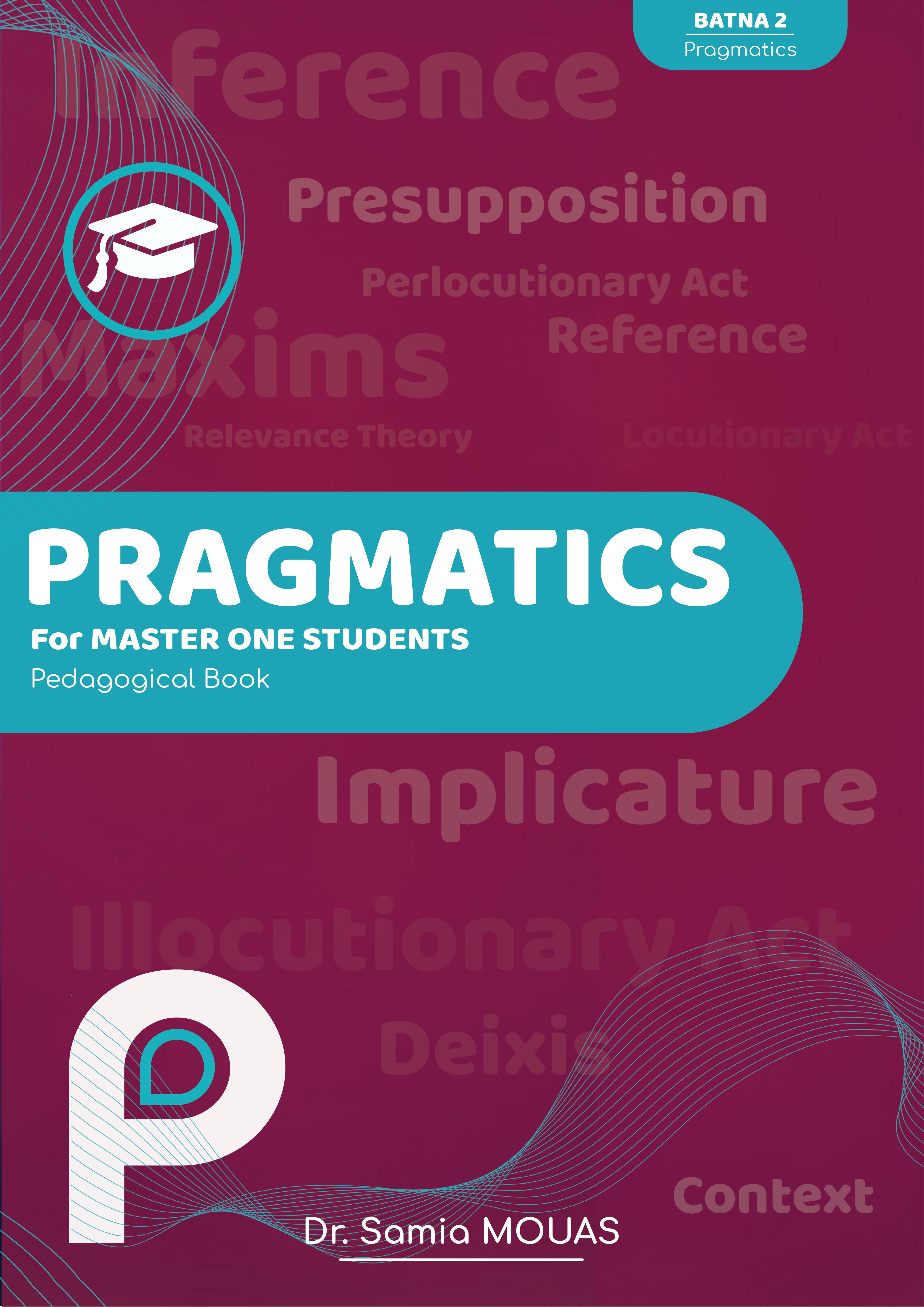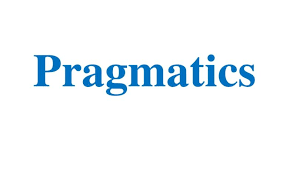- Teacher: SAIDA TOBBI
Course Description:
This course provides an introduction to pragmatics, an important sub-field of linguistics. Pragmatics is the study of contextualized meaning in language. In pragmatics, we examine the relationship between the meaning of an utterance and the context in which the utterance is produced. In this course, we will explore a wide range of topics in the discipline, such as presupposition, implicature, speech acts, deixis and reference. Students will read original and recent work in these areas, and engage themselves in analyzing different types of utterances and their meanings as they are shaped by different pragmatic factors.
Course Objectives:
At the end of the course, students will be familiar with the basic topics in the study of pragmatics. Exercises, assignments and the final exam will focus on the analysis of spoken and written utterances from different perspectives. Students will learn about different strategies for identifying patterns and labelling of pragmatic phenomena. Another goal of the course is to enable students to write descriptive accounts of their analyses of utterances (texts/dialogues), and to explain how the study of pragmatics contributes to a better understanding of language.
Topics to be covered:
2. Implicature
3. Presupposition
4. Speech acts
5. Deixis
6. Reference
7. Discourse structure
8. Pragmatics and semantics
1. Definition and overview of the field

Pragmatics is a fifteen-unit course available in the first
semester of the second year for Master 2 Language and Culture students. Pragmatics as a program of study develops out of the desire to
properly explain the nature of language and how it works in the context
of people and situations. Much of the progress made in this discipline
may be attributable to reactions of linguistic scholars and all those
interested in communication to the formal approach to language study,
especially structural linguistics and those that believe that language is a
purely mental process. Pragmatics and other sociolinguistic sub-fields
attempt to demonstrate the social dimensions of language and explain
the difference between linguistic forms and what speakers actually say
and mean in different social contexts. Pragmatics has been defined as
the study of speaker/context meaning showing how language users
manipulate language forms, distort or reorganise sentences in order to
express their intentions.

- Teacher: SAIDA TOBBI